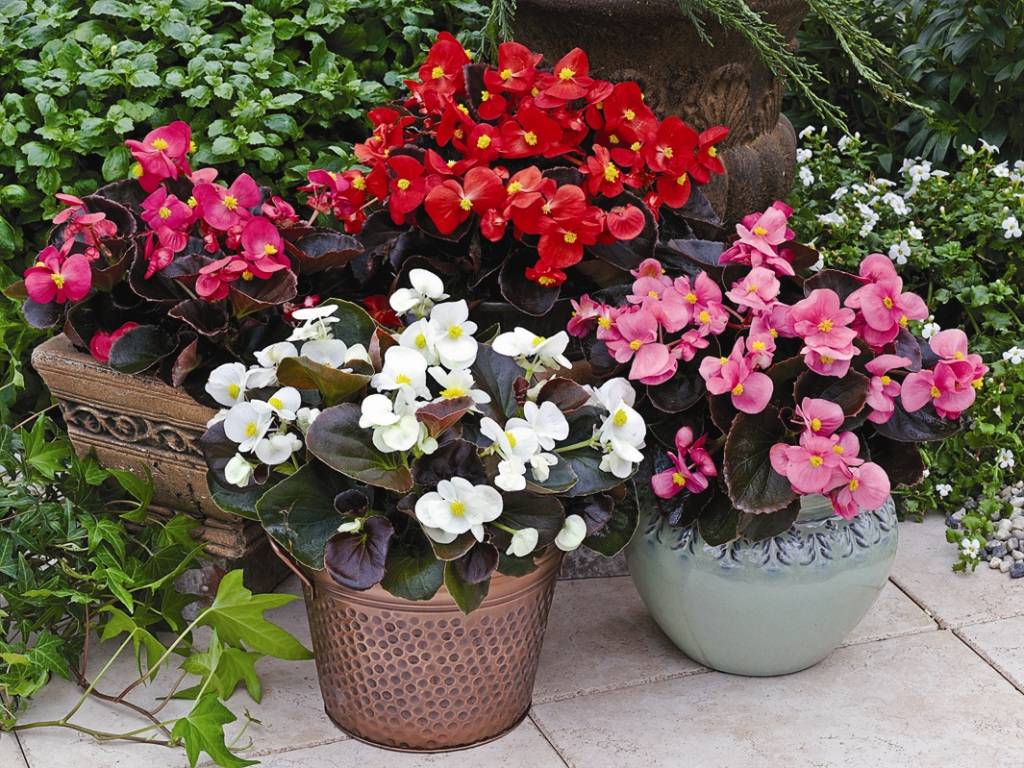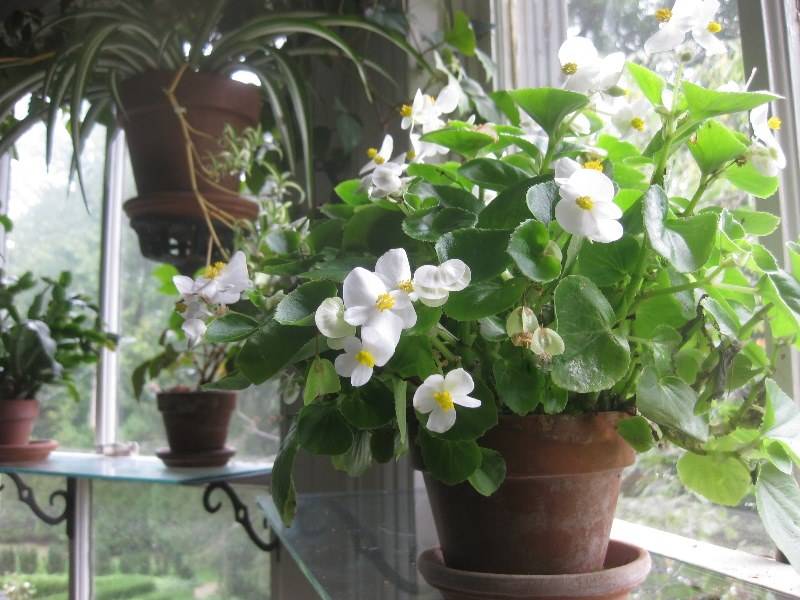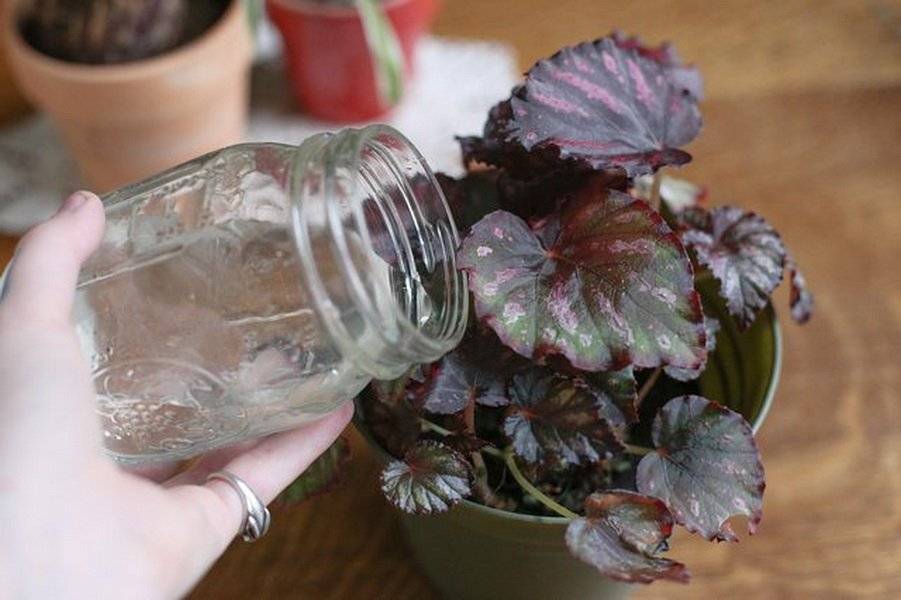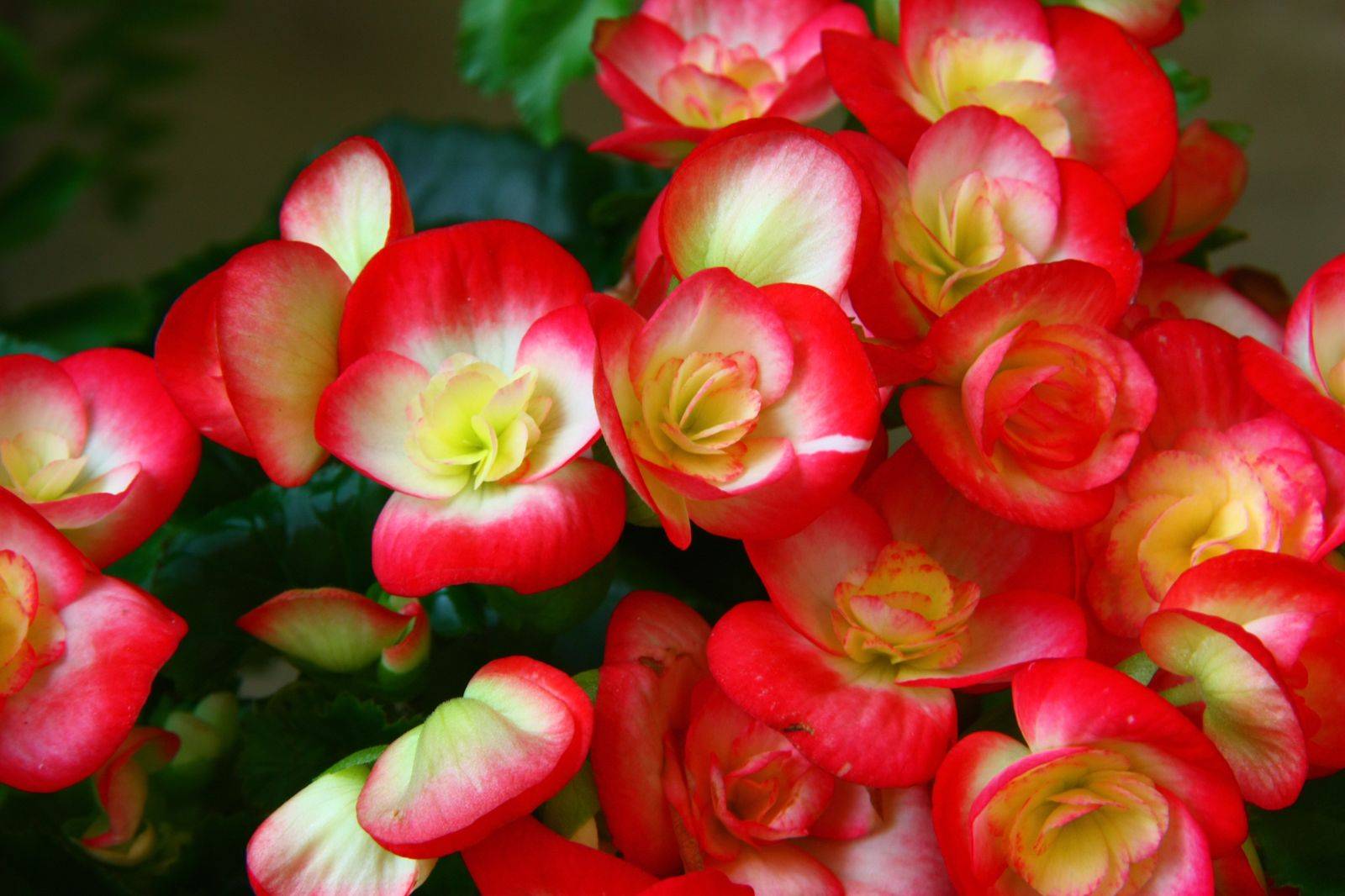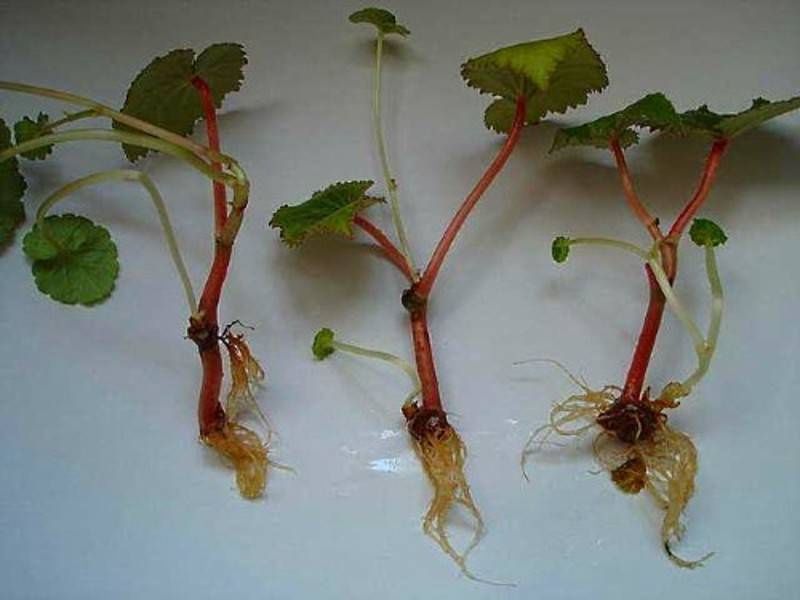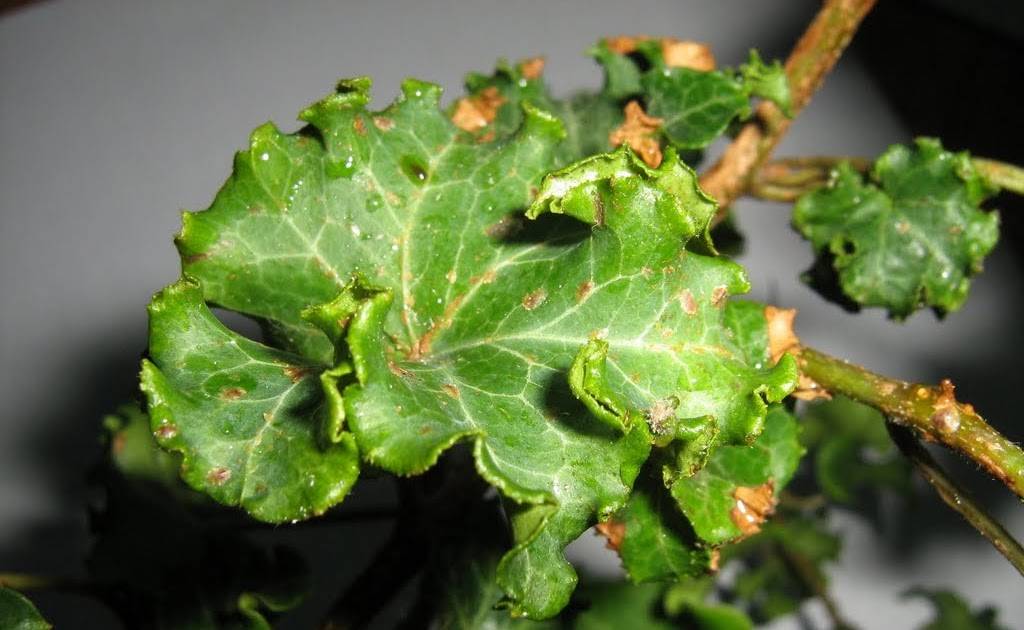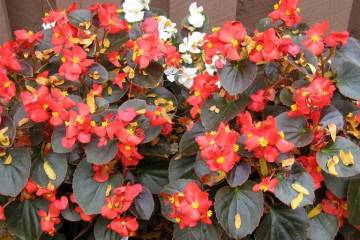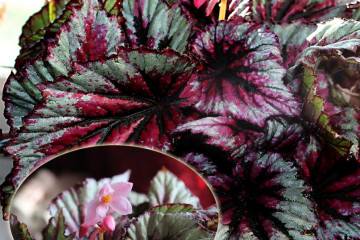Ever-flowering begonia - cultivation and care
Content:
Ever-flowering begonia (Begonia Semperflorens) is a decorative leafy type of flowers that has such a gorgeous appearance and abundant flowering that it can fall in love with anyone, even the most fastidious gardener. This species is native to the Brazilian tropics. Since there is no cold or frost, evergreen begonia has the ability to develop and bloom throughout the year. Due to its showiness and unpretentiousness, it always enjoys the increased attention of flower garden lovers.
Description of always blooming begonia
This begonia is very small in size and differs from other evergreens in small rounded leaves of various colors.
Depending on the variety, begonia can grow from 8 to 36 cm. This should be taken into account when designing the landscape design of the site. The flowers of the plant can have a variety of colors: from pure white to bright red. Thanks to this variety, begonia can participate in the creation of any garden compositions. Whatever the wishes for the design of the site, there is always a suitable plant variety.
Common varieties
Begonia semperflorence is part of the Begoniev family. A large number of plant varieties are divided in height into tall, medium-sized and low-growing. Begonia can be grown both at home and outdoors.
Below are the most popular varieties.
- Luchenets F1. Hybrid plant no more than 20 cm high. Small white flowers with a pink border. The bush of such a begonia will be very branchy. Lucene can bloom before the onset of cold weather.
- Senator Pink F1. Small flowers collected in a bunch are a characteristic feature of this classic variety. It can be planted both outdoors and at home. When growing up, the Senator bush begins to evenly branch and become covered with flowers of a dark bronze hue.
- Boushin. It belongs to tall species and can reach a height of 40 cm. The bush of this species has an oval shape. At the beginning of flowering, the petals are bright pink in color. The color of the leaves depends on the lighting conditions. It differs from other relatives in its ability to independently shed wilted buds.
- Havana Scarlet. It can grow up to 25 cm. It has bronze-colored leaves and bright red flowers.
- Olomouc is one of the shortest growing varieties. The height of an adult bush rarely even reaches 20 cm. The flowers bloom, although small in size, but have a rich white color.
- Ambassador F1. Combines several begonias hybrids and can have seven different colors. One of the most unpretentious varieties. The leaves of the plant are dark green in color.
Healing properties
In addition to aesthetic pleasure, the plant also has some healing properties:
- cleans the air around itself from dust bacteria and toxins;
- the substances synthesized by the plant help fight a large number of types of fungi and microorganisms;
- begonia juice can be used as an antibacterial and pain reliever. It helps to improve blood circulation, as well as reduce blood pressure;
- on the basis of the flower, many drugs are made that help in the treatment of stomach ulcers, bruises and sprains;
- like a cactus, it smooths out the effect of harmful radiation from household appliances on the body.
History of appearance
All currently known plant varieties have been found in the tropics and subtropics. She became world famous in the 17th century. thanks to the expedition of the scientist-botanist S. Plumier. During the study of the flora of the Antilles, he discovered a previously unseen species of flowers. Subsequently, they were named after the person who sponsored this voyage - M. Begon.
And although the date of discovery of begonias is considered to be 1690, in Europe its cultivation began only in the 18th century. This is due to the fact that it became possible to grow a plant in unusual environmental conditions only from tuberous varieties that were discovered later. Initially, the flower was grown in greenhouses and greenhouses, and only later, unpretentious species in cultivation were obtained.
Features of caring for ever-flowering begonia at home
In order for the plant to feel comfortable, it must be properly cared for.
Temperature
When caring for a room view, you must observe the correct temperature and humidity level. The plant tolerates high temperatures rather calmly, but is not adapted to cold weather, since the flower can stop growing and even die. But in winter it is not worth putting it to the battery, since it is necessary to provide it with an ambient humidity of 50%. With a decrease in the indicator, the leaves of the flower will turn yellow and dry, and with an increase, they will rot.
Lighting
Begonia is a light-loving species, so it should be placed in a well-lit place. To get a richly flowering plant, it must be placed on the sunny side of the house, protected from direct sunlight.
Important! If you put begonia on the windows facing the north side, then the plant will fade, stretch and generally lose its decorative appearance.
Watering
It is best to water with boiled water. The frequency is determined depending on the condition of the upper part of the soil. Do not allow the soil to dry out or excessively wet. To avoid exposure to sunlight, it is advisable to perform the procedure in the morning or in the evening.
Priming
Begonia can grow in almost any soil, but for abundant growth, it is better to use slightly acidic, loose soil. The mixture you need can be purchased at the store or collected in the garden and mixed with baking powder. Since the root system of the flower is located on the surface of the earth, the pot for planting should be chosen shallow, but wide enough.
Top dressing
In order for the plant to remain healthy and develop actively, it must be fertilized regularly. This is done twice a month during the period of active growth. Most of all, feeding is needed when the plant is blooming and sprouting.
Features of care in winter
The most important thing to do with the onset of winter is to provide the plant with the correct temperature regime and sufficient illumination. If all these conditions do not differ from the summer period, then begonia will bloom almost forever. If, for some reason, it is impossible to organize the required temperature and sufficient lighting in the room, then a rest mode is created for the flower. To do this, the pot is brought into a cool place, the number of watering and dressing is reduced.When all the necessary conditions are restored, the care regimen becomes the same.
When and how it blooms
Begonia flowers are unisexual and are placed in 2 or 4 pieces. on one peduncle. They can be terry or ordinary to the touch. The petals are white, yellow, pink or red. Since the plant is variegated, you can find flowers that have two shades: white petals with red or pink stripes.
With proper care, begonia can bloom all year round, but in order for this process to be more abundant and bright, it is better to organize a rest regime. It is best to choose the period from late spring to late autumn for flowering. At this time, the frequency of feeding should be increased to once a week. For more active flowering, wilted buds should be removed.
Pruning
Sometimes, in order for a plant to grow and bloom more actively, it needs pruning. And given that begonia is most often a perennial plant, with the help of a timely procedure, it can be rejuvenated. When pruning, the longest, driest and most diseased shoots are removed. Damaged leaves and buds are also cut off.
Reproduction
Ever-flowering begonia at home can be propagated in two ways:
Seeds
This is a rather unpopular type of propagation, as at home it is only suitable for plants with simple flowers. Other varieties with this method will lose all their unique properties.
The seeds are evenly scattered over the surface of the soil, covered with a transparent film, then the pot with them is brought into a warm place. You can plant shoots when at least a couple of leaves appear on new plants.
Cuttings
For this method, branches about 10 cm long are cut off, the lower leaves are removed, and the cut site is processed with a root. Cuttings can be placed in water to form roots or planted directly into soil with the addition of sand. Seedlings are transplanted into separate containers when the first shoots appear.
Transfer
It is necessary to transplant begonia only as a result of a highly overgrown root system. This is done 1-2 times during the entire life of the plant. For this, a wider container is taken into which the flower is moved. If the bush is young, then this action is performed with a complete replacement of the earth; when transplanting a mature plant, it is enough to renew the surface layer of the soil.
Possible growing problems and begonia disease
When the vital activity of the plant is disturbed, the following signs are characteristic:
- pale leaves and an elongated stem indicate a lack of lighting;
- if the leaves and buds dry up, then the surrounding air is too dry;
- also curled and dried leaves indicate insufficient moisture and too bright sunlight.
The main pests for begonias are aphids and spider mites. They are easy to fight with organic products. The simplest thing is to spray the bush with onion peel infusion.
In addition to insects, the plant is affected by several diseases. This can be bacterial wilting, in which black spots appear on the leaves, or a powdery mildew infection, characterized by the formation of a white coating. But the most dangerous thing is if the begonia gets sick with a viral mosaic, in which case the treatment will not help, and the plant will have to be thrown out. Fungicides will help in the fight against other ailments.
If you follow all the necessary rules for planting and caring for ever-flowering begonia at home, you can become the owner of a bright plant that will adorn any home.
